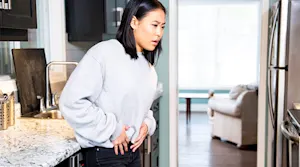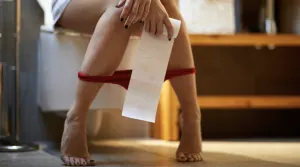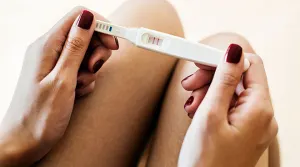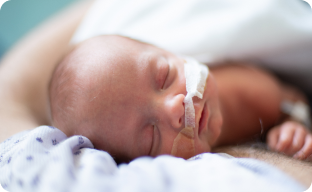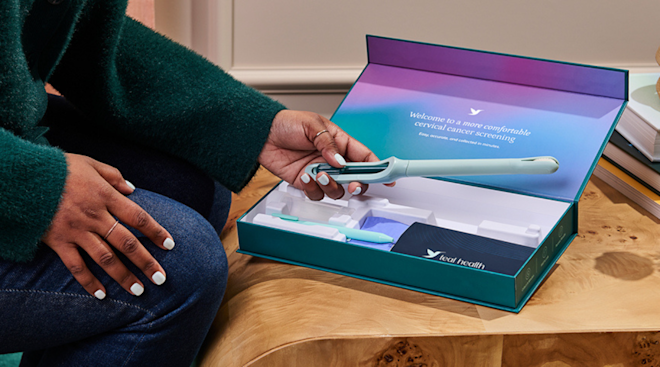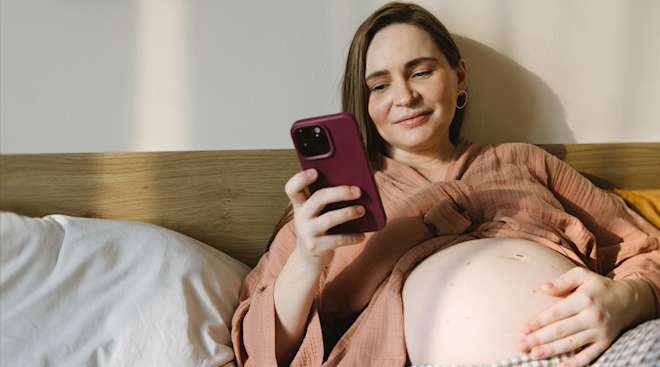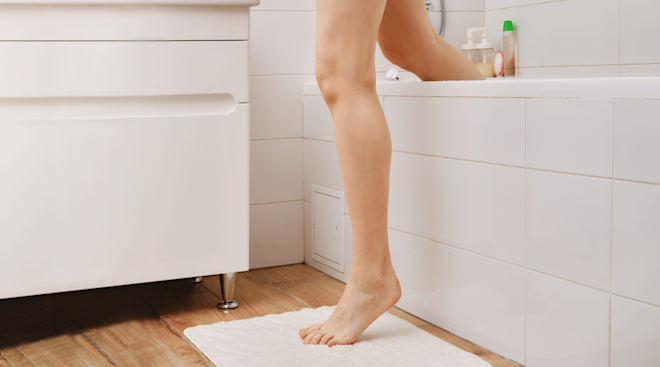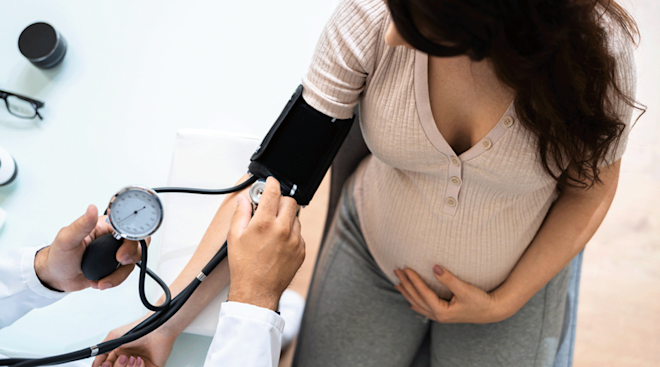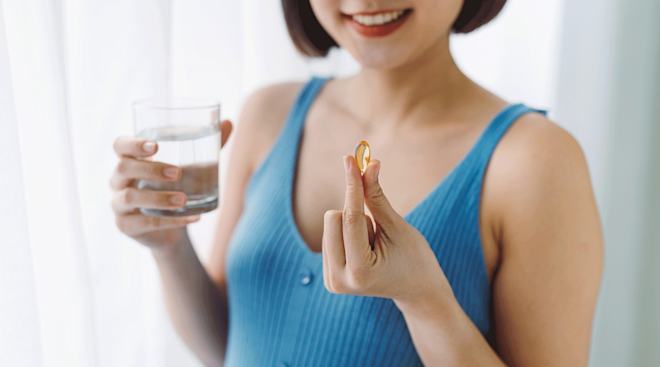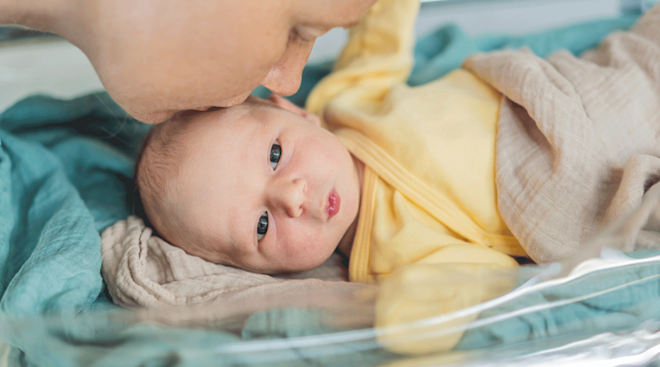How Postpartum Massage Can Speed Up Recovery, According to Experts
Some of us are “massage girlies,” and others definitely aren’t. You probably know exactly which camp you fall into. I’m definitely the former—if I haven’t set foot inside a spa for a couple months, I’m scrolling ClassPass for my next appointment or counting down the days until my next weekend getaway (which is always a great excuse for a massage).
While I was pregnant, I indulged in a couple of prenatal massages to help with back pain and pelvic floor issues. After giving birth, I booked weekly one-hour sessions for a while to help with the lingering lower back pain from pregnancy and neck tension from breastfeeding and baby-carrying.
Postpartum massage helped me with postpartum anxiety because it allowed me to zone out and focus on the moment. It also helped me work on specific aches and tightness in my body. (In those early days of baby, it can also be really nice to have an excuse to get out of the house.) But while it can be a wonderful self-care activity and potentially even help support your recovery, there are precautions to take if you’re interested in massage postpartum. Read on for everything you should know about postpartum massage, including postpartum massage benefits, postpartum massage contraindications and more.
Postpartum massage is more than just a soothing spa treatment—it’s a specialized type of massage that can help speed up postpartum recovery and help you heal, according to the American Pregnancy Association (APA). Just make sure to find a qualified massage therapist who’s trained in working with new moms.
You can generally start postpartum massage between four and six weeks after birth, says Kecia Gaither, MD, MPH, associate professor of clinical obstetrics and gynecology at Weill Cornell Medicine and director of perinatal services at NYC Health + Hospitals/Lincoln. She adds that the timing can vary based on the type of delivery you had—it may take you longer if you had a C-section—your recovery progress and any specific recommendations from your healthcare provider.
Personally, I started around 10 weeks postpartum, because that’s when I felt (more or less!) fully recovered from my C-section and had the mental space for self-care appointments. (Of course, with your healthcare provider before starting postpartum massage to make sure it’s safe for you.)
If you’re a fan of massages, we probably don’t even have to tell you about all the wonderful postpartum massage benefits. But if you’re new to the game, some of the main ones include:
Promotes relaxation
Postpartum massage helps relieve stress and anxiety, which can increase during the postpartum period, says Gaither. This was the biggest benefit for me: Having to lie still allowed me to surrender to the relaxation. The soothing sensations of the massage helped quiet my racing thoughts. The APA says massage can also promote better sleep—no wonder many of us get so sleepy on a massage table.
Reduces muscle tension and pain
Gaither says postpartum massage can help reduce tension particularly in the neck, shoulders and back, which can feel strained from all those hours of holding and feeding baby. As someone with tight trapezius muscles, I loved every single moment of the massage therapist working on my upper-back area. The APA also notes that postpartum massage can help with pain relief, although you’ll need more sessions if your pain is chronic or severe.
Improves circulation
Massage “enhances blood flow, which can aid in recovery and healing,” says Gaither. Amanda Rose, a massage therapist at One Tribe in Miami, adds that postpartum massage can help encourage the uterus to contract back to its normal size.
Helps balance hormones
Postpartum massage can help lower cortisol (your stress hormone) and boost oxytocin (your feel-good hormone), all of which can help with mood, relaxation and bonding with baby, says Rose.
Encourages lymphatic drainage
“Fluid retention can occur during pregnancy, and massage can assist with reduction of swelling,” says Gaither. Note that while postpartum massage can help with lymphatic drainage, services specifically labeled “lymphatic drainage massage” may be too intense for people with certain conditions so be sure to check with your provider first. (More on this later.)
May help increase breast milk supply
Studies suggest that massage can increase levels of prolactin, the hormone responsible for lactation. Plus, the APA notes that relaxation in your chest muscles opens the shoulders and improves lactation.
Supports emotional wellbeing
Postpartum massage may help with postpartum depression by lifting your mood through the release of endorphins, says Gaither. Massage can also increase dopamine and serotonin levels, helping to boost your mood.
In general, experts say it’s best to go for gentler types of massage postpartum—you don’t want to overwhelm your body after you’ve just given birth. “We recommend Swedish-style massage, which uses elongated strokes,” says Kristi Cuff, massage supervisor and therapist at The Spa at MacArthur in Sonoma, California.
Rose lists a few key postpartum massage techniques for various areas of your body:
- Abdominals. Light, circular strokes can support digestion and help your uterus shrink back to its former size. Make sure to avoid deep pressure, especially if you had a C-section.
- Lower back and hips. “These areas take a beating during pregnancy and labor,” she says. “Myofascial release, gentle kneading and stretching can help loosen up tight muscles.”
- Shoulders and neck. “Carrying, feeding and holding a baby all day can cause serious tension here,” she says. “A mix of gentle pressure, kneading and stretches helps relieve tightness.”
- Legs and feet. Light strokes on the legs and feet promote better circulation and reduce swelling. Make sure to avoid deep pressure on the legs during the first few weeks postpartum to prevent any clotting issues.
- Hands and wrists. “A lot of new parents get wrist pain from constantly lifting baby (hello, ‘mommy thumb’!),” she says. Gentle massage and stretching can alleviate these aches.
- Breast massage. “Light, outward strokes can ease engorgement and improve lymphatic flow,” she says. (Only do breast massage if you’re fully comfortable with it, she adds.)
How to do postpartum massage at home
If you’d rather not spend money on a massage—or drive to the spa—there’s plenty you can do on your own. Rose has a few tips for doing postpartum massage at home:
- Gently massage your abdomen using warm oil and light circular strokes to “support digestion and gentle uterine contractions.”
- For shoulder and neck relief, you can wedge a tennis ball between your back and a wall and ease into it, or roll it around.
- If you’re struggling with swelling, try elevating your feet and using light strokes toward the heart.
- If you like, you can use tools like a foam roller, massage gun or even a warm compress.
If you have one of the following conditions, your healthcare provider may advise against getting a postpartum massage, says Gaither. Postpartum massage contraindications include:
- Severe hypertension or cardiovascular issues
- “Major abdomino-pelvic surgery recovery not yet cleared by your healthcare provider,” such as a complicated C-section recovery
- Blood clot issues, such as deep vein thrombosis
- Other severe postpartum complications, such as infections or major bleeding
When it comes to parts of your body, Rose advises to avoid or be careful with the following areas and techniques:
- Deep abdominal work during the early postpartum period, especially after a C-section)
- Heavy pressure on swollen legs due to potential risk of clotting
- Massaging directly over healing incisions such as C-section scars, perineal tears or an episiotomy
Cuff notes that too much pressure on the upper back and chest area can cause discomfort for some breastfeeding moms.
As always, make sure to speak to your doctor about your individual situation.
Frequently Asked Questions
Can you get a lymphatic drainage massage postpartum?
While it’s safe in general, Gaither says to approach lymphatic drainage massage with caution if you have a condition such as a blood clot. An infection like mastitis is also a good reason to check with your doctor before trying this, adds Rose.
Can you get a deep tissue massage postpartum?
I normally absolutely love deep tissue massage, but I was much more comfortable keeping it gentle during the first few postpartum months. Gaither notes that deep tissue massage may be too painful while you’re more sensitive postpartum. Rose says it’s “best to avoid in the first few weeks since your body’s still healing.”
Can you get a hot stone massage postpartum?
Gaither notes that it’s best to avoid hot stone massage and other heat treatments during the postpartum period due to their potential effects on healing.
What is an ayurvedic postpartum massage?
An ayurvedic massage, also known as abhyanga, is a traditional practice that uses warm herbal oils to promote healing and relaxation, Rose says. “Ayurvedic practices focus on deep nourishment and recovery, and if done gently, they can be a great way to support postpartum healing,” she says. Ayurvedic massage usually involves:
- Warm oils, like sesame or coconut infused with herbs such as ashwagandha or shatavari, “to nourish the body and support hormone balance,” says Rose
- Long, flowing strokes to promote circulation and relax muscles
- Light pressure on the abdomen to support digestion and help the uterus shrink back down
It’s best to consult with a healthcare provider before starting an ayurvedic treatment.
Is postpartum massage covered by insurance?
There’s no guarantee that your insurance provider will cover massage therapy. However, you can call your insurance company to ask if there are licensed massage therapists in-network with your plan, according to The Ohio State University Wexner Medical Center. If you have a specific concern such as muscle pain, it can help to have your doctor prescribe massage therapy.
Why do they massage your stomach after birth?
Fundal massage, aka uterine massage, isn’t your typical spa massage service. For the first few hours (or sometimes days) after you give birth, your healthcare provider will “massage” your uterus by pushing downward and inward on your stomach, says Penn Medicine Lancaster General Health. Fundal massage encourages the uterus to contract and helps prevent postpartum hemorrhage. It’s performed after both vaginal and C-section deliveries. So while it’s not particularly soothing, it is necessary—and you can book some relaxing massages very soon!
Postpartum massage can decrease stress, ease muscle tension, improve circulation and more. As long as the pressure is gentle and your provider hasn’t advised against it, it can be a relaxing way to treat yourself and take a break from the stresses of new parenthood.
Please note: The Bump and the materials and information it contains are not intended to, and do not constitute, medical or other health advice or diagnosis and should not be used as such. You should always consult with a qualified physician or health professional about your specific circumstances.
Plus, more from The Bump:
Kristi Cuff is a massage supervisor and therapist at The Spa at MacArthur in Sonoma, California.
Kecia Gaither, MD, MPH, MS, MBA, FACOG, is a double board-certified physician in ob-gyn and maternal-fetal medicine specialist and the director of perinatal services and maternal-fetal medicine at NYC Health + Hospitals/Lincoln. She also serves as an associate professor of clinical obstetrics and gynecology at Weill Cornell Medicine. She earned her medical degree from SUNY Health Science Center in Syracuse, New York, and holds a master’s degree in public health.
Amanda Rose is a massage therapist at One Tribe in Miami, as well as a yoga instructor, doula and dancer. She works with moms through the full spectrum of preconception, pregnancy and the postpartum period.
Alternative Therapies in Health and Medicine, Massage Increases Oxytocin and Reduces Adrenocorticotropin Hormone in Humans, November-December 2012
American Pregnancy Association, Postpartum Massage
Cleveland Clinic, Prolactin, December 2024
International Journal of Neuroscience, Cortisol Decreases and Serotonin and Dopamine Increase Following Massage Therapy, July 2009
Narra J, Enhancing Oxytocin and Prolactin Levels to Address Oligogalactia Through Emotional Management and Massage in Working Mothers, December 2024
NewYork-Presbyterian, Back Pain: Self-Massage with a Tennis Ball
Penn Medicine Lancaster General Health, Childbirth Diaries: Fundal Massage
The Ohio State University Wexner Medical Center, How to Get Medical Insurance to Cover Massage Therapy, March 2018
Learn how we ensure the accuracy of our content through our editorial and medical review process.
Navigate forward to interact with the calendar and select a date. Press the question mark key to get the keyboard shortcuts for changing dates.
